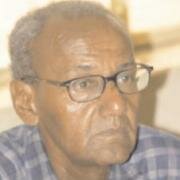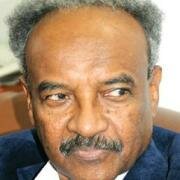In the General Assembly Resolution of 6 Sept. 2006, on the, Global Counter Terrorism Strategy members states
pledged to achieve the following objectives: to counter terrorism; settle international conflicts, end foreign occupation, fight against injustice and discrimination, eradicate poverty, promote growth and sustainable development, achieve global prosperity, good governance and respect for human rights and the rule of law, improve international , and ensure respect for all religions, value systems, culture and faith.
These were massive agenda that required concerted efforts from all countries, especially the major powers that control the international decision-making institutions in the political and economic domains. But why has this grand strategy failed?
One answer may in the prestige’s Stockholm Peace Research Institute paper that focused on the ISIS (Islamic State).
It wrote that; The Islamic State in Iraq and Syria (ISIS) has dramatically undermined stability in Iraq, Syria and the broader Middle East and poses a global risk to peace and security. The international community has struggled to find consensus on an effective response to the threat posed and too often falls back on simply intensifying current measures, which are incoherent and largely ineffective. In order to fight ISIS more effectively, it is necessary to evaluate why the current measures are not working and look at potential alternatives.
ISIS has flourished in ungoverned or weakly governed areas of countries affected by conflict or political instability. The complex environments within Afghanistan, Iraq, Libya, Nigeria, the Sinai Peninsula, Syria and Yemen provide ISIS with resources, recruits and safe havens. In addition, large numbers of ISIS recruits have come from relatively stable countries, such as Tunisia, further clouding the picture. Overall, however, combatting ISIS in most of the affected countries needs to be part of broader and longer-term efforts to restore security, tackle political injustices, increase economic output and promote effective governance.
So far, external military operations against ISIS have focused largely on airstrikes.. The air campaign has had mixed results, with critics arguing that it has done little to undermine the appeal of ISIS’ ideology and could in some cases have strengthened that appeal. Almost every air campaign against terrorists causes civilian casualties and the destruction of infrastructure, and ISIS operates almost entirely among civilians in cities such as Raqqa and Deir Ezzor in Syria and Mosul in Iraq. Recently the catastrophic results of these air strikes on civilians have been very
Moreover, increasingly, voices are saying that Western military intervention plays into the hands of ISIS and can lead to unintended consequences such as the creation of more terrorist groups; ISIS, for instance, was born out of the Iraq war. However, the military toolbox is just one front in the battle being waged against ISIS and there are other, arguably more effective ways for states to deal with the threat.
ISIS uses social media for recruitment, communication and spreading propaganda. A recent ISIS slogan, ‘half of Jihad is Media, is an idea borrowed from the leader of al-Qaeda, Ayman Al-Zawahiri, who said: ‘ More than half of this battle is taking place in the battlefield of the Media.’ Countering ISIS propaganda is crucial. If ISIS loses its followers, it loses its strength. In the arena of digital counterinsurgency, there is still much room for improvement.
How to conduct an effective international intervention against ISIS is a question at the very centre of global politics today. An optimal intervention strategy does not exist; instead, the international community needs a combination of many smaller measures including, crucially, cutting off ISIS’ supplies of both finances and supporters. ISIS operates across three dimensions: (a) the areas under its direct control in Iraq and Syria; (b) as an international terrorist network or franchise; and (c) as an ideological movement of jihadist extremism. Therefore, the recipe for true peace needs to address these three dimensions in a coherent and sustainable way—and it will not be easy.
-
Business Vision: The Voice of CitizensNext >




